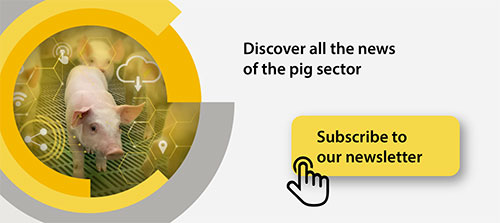Blog
Blog
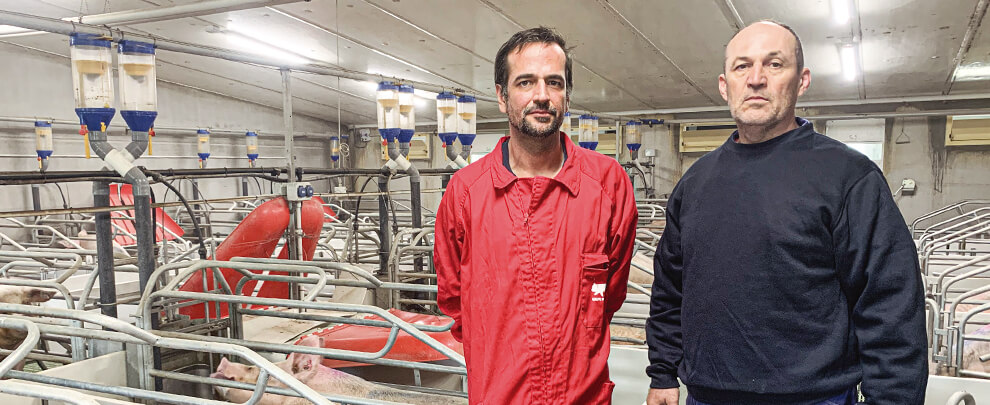
A. Cabezas: "With the Ni-2 we prevent animals die by crushing"
12th May 2022 - Success stories
Since the acquisition in 2010 by the Premier Pigs group of the Industrial Farm located in Artesa de Segre (Lleida), Álvaro Cabeza, head of the Team of With an initial capacity for 900 sows and 7,000 fattening places, in 2021 the facilities were transformed until reaching the current figure of 3,000 sows and 6,800 transition places. After the last improvement in farrowing pens done last year, Premier Pigs decided to install the Ni-2 corner of Rotecna for the good results obtained with this product in a newly built farm. Álvaro Cabeza highlights its handling ease, a lower number of crush casualties, the creation of a comfort zone for piglets and energy savings.
When did you decide to go into farming?
I studied veterinary medicine in Córdoba, and in the third year, I decided that I wanted to get into livestock production professionally. So, I started doing internships and working in nearby farms, first in Andalusia, and then I moved to Catalonia, where I settled.
What are the origins of this farm located in Artesa de Segre?
This farm was bought by the Premier Pigs group in 2010, with 900 sows and 7,000 fattening places. Since then, it has been renewed and transformed little by little to remove the fattening places and reach the current capacity of 3,000 sows and 6,800 weaning places.
How is the farm distributed?
Taking advantage of the old and newly built warehouses, the farm has a quarantine area for gilt rearing, an adaptation and coverage area for gilts, a multiparous covering area, the confirmed gestation zone, the calving warehouses and a transition zone.
How many people work here?
There is a team of 13 people; the person in charge of the farm, the person in charge of farrowing, the person in charge of gestation, the person responsible for weaning and the rest of the team, which act as a reinforcement in the different areas. In addition, there is a veterinarian who supports the farm every week and carries out a follow-up control of the technical and sanitary data.
Among the products that you have installed, there is the Ni-2 Corner from Rotecna. Why did you choose this equipment?
We installed them last year on a new farm and we were very happy with the results, so we decided to also instal them in the restructuring we did here of the farrowing pens. In the end, you are always looking for products that allow you to create a comfort zone for the piglet when it is born and that facilitates colostrum intake. With Ni-2 we achieve that synergy between what the sow needs and what the piglets need.
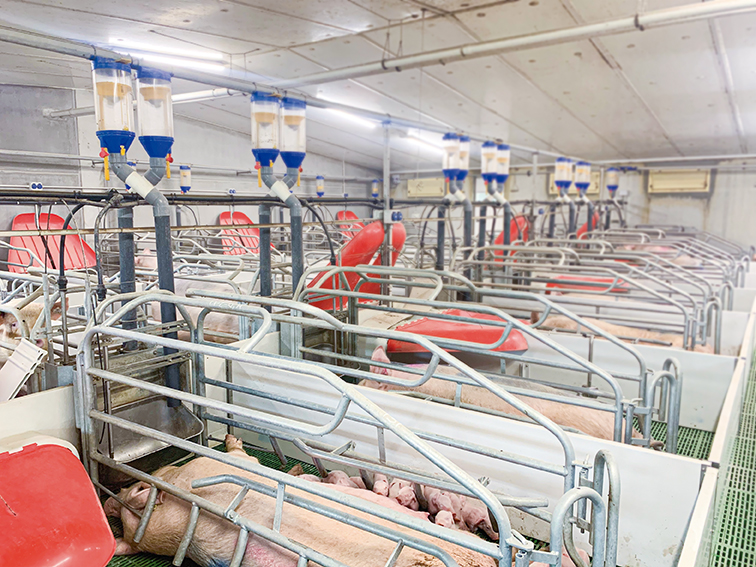
Image of one of the reformed farrowing wards with the Rotecna Ni-2 Corner installed. Photo: Rotecna.
How is the handling with Ni-2?
When we prepare the rooms to enter the sows at calving, we also leave the Ni-2 prepared with the light bulbs ready in case we need them. From there, when we assist the birth, the piglets are placed under the nest with the heating plates and are heated in turns. As the animals grow, the spotlights are turned off, the nests are raised and the temperature of the plates is reduced.
What are the advantages of working with Ni-2 in farrowing?
The main advantage is that it allows you to have the room a little cooler for the sow and give the animals inside the nests the temperature conditions they need. In this way, you do not have to have the room so hot, which would harm the well-being of the sow, and you can count on a comfort zone for the piglet, where it is also protected from the air currents that could be generated.
Are there benefits in the productive field?
Undoubtedly, at a productive level, it is much better to work with nests and to be able to offer the piglet the optimal conditions necessary in its first days of life. In terms of the number of piglets per delivery, we save more animals at birth, since with the nests we prevent the animals from seeking the heat of the sow at birth and dying by crushing. In addition, we can also work on the colostrum intake better, which guarantees ideal conditions for piglets to start well.
What are the energy savings of being able to work in two climates in farrowing wards?
Working with nests and being able to create a microclimate inside helps you reduce the energy consumption of the rooms, because you do not have to be heating the room to a higher temperature and allows you to adjust, along with ventilation and heating, the temperature of the room with that of the Ni-2 to achieve the comfort that both sows and piglets need. In this sense, we are carrying out a comparative study between farms with nests and without nests and, although we are in the measurement phase, we do see, for example, that of the farms where we have biomass, consumption is lower in those farms in which we work with nests compared to those in which we only have the plates. Therefore, energy consumption with nests is less safe.
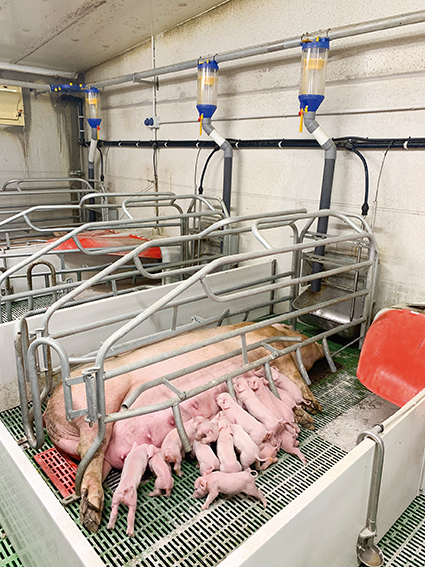
Ni-2 offer piglets optimal temperature conditions. Photo: Rotecna.
Do you have any other Rotecna products installed on the farm?
90% of the products on this farm are from Rotecna. Apart from the Ni-2, we have the farrowing and weaning floors with Rotecna slats, the dispensers, the PVC separators, first-age dishes, the TR-5 hopper in weaning, the distribution system of farm feed, etc. The truth is that Rotecna offers very good value for money, the products are easy to use and handle, and, in addition, it is a nearby company, which always gives you the guarantee of receiving good service.
Specifically, of the TR5 hopper, what benefits would you highlight?
We like this weaning hopper because it is easily adjustable to the requirements we need for the starting and continuous growth of piglets, it is easy to clean and also to handle because it does not weigh much.
In the health field, what are the main concerns on this farm?
As in all of them, that PRRS remains stable, that no outbreaks enter, and we work conscientiously towards this. We have controlled the issue of diarrhoea in calving quite well, we have worked since May 2016 without zinc in weaning, and we have removed amoxicillin in starter since January, next we have to reduce the use of antibiotics, and we are quite happy. We administer the necessary vaccines, perform controls and make sure that no outbreaks arise.
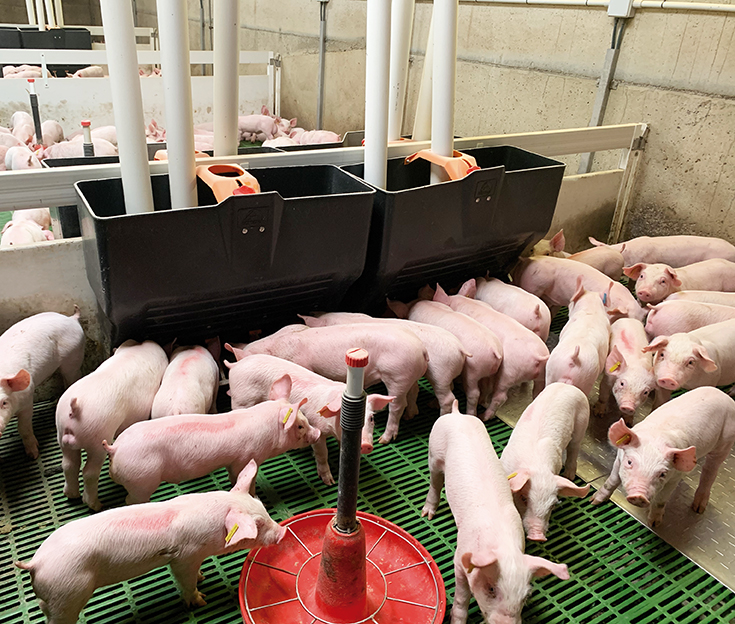
The weaning wards are equipped with Rotecna products: TR5, Maxi Pan, slats, PVC fences... Photo: Rotecna.
To reduce health risks, what biosecurity measures are in place on the farm?
We have the entire farm fenced, well-separated areas of the corpse, slurry collection, and truck access with a disinfection arch. At the entrance to the farm, we have the changing rooms with mandatory showers for anyone who enters the facilities and, in addition, other measures such as birdhouses, rodent control, etc., to make sure nothing makes it in. In addition to external biosecurity, in terms of internal biosecurity, taking into account that it is an old farm that has been renovated, great care is taken in the personnel movements between areas, so the boots disinfection is monitored when moving from one area to another.
What are the future challenges this farm faces?
Last year the growth ended before the current count of 3,000 sows and now the challenge is to continue maintaining the production we have above 30 piglets per sow per year and to increase the number. On the other hand, at the sanitary level, to keep the farm stable and working as it has been doing until now.







